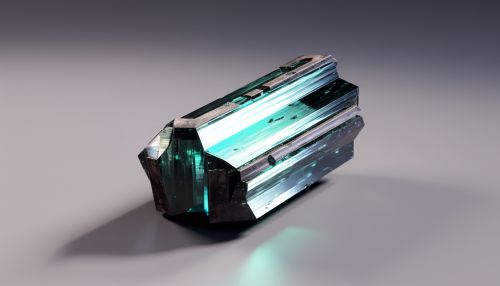Indium
Overview
Indium is a chemical element with the symbol In and atomic number 49. It is a post-transition metal that makes up 0.21 parts per million of the Earth's crust. Very soft and malleable, Indium has a melting point higher than sodium and gallium, but lower than lithium and tin.


Characteristics
Indium is a silvery-white, highly ductile post-transition metal with a bright luster. It is so soft (Mohs hardness 1.2) that like sodium, it can be cut with a knife. It also leaves a visible line on paper. Indium has a low melting point for metals and above its melting point, it vaporizes rapidly. It has a face-centered tetragonal structure and is marginally radioactive.
Applications
Indium's most common industrial use is in the production of electrodes used in liquid crystal displays (LCDs). It is also used in the manufacture of photovoltaics, where it is used in thin-film solar cells produced from copper, indium, gallium, and selenium (CIGS). Other applications include the production of semiconductors, alloys, solders, and the creation of transparent conductive coatings.
History
Indium was discovered in 1863 by Ferdinand Reich and Hieronymous Theodor Richter by spectroscopic methods. They named it for the indigo blue line in its spectrum. Indium was isolated the next year.
Production
Indium is produced exclusively as a by-product during the processing of the ores of other metals. Its main source material are sulfidic zinc ores, where it is found in compound form. After the ore has been concentrated, indium is recovered in a series of steps ending with the production of indium metal.
Biological role and environmental impact
Indium has no known biological role, though its compounds are somewhat toxic when injected into the bloodstream. Most occupational exposure is through ingestion, from which indium compounds are not absorbed well, and inhalation, from which they are moderately absorbed.
